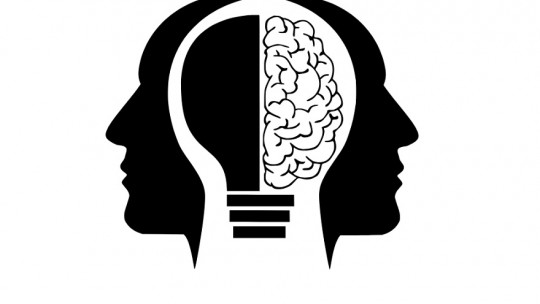
Attention is a cognitive process that allows you to focus selectively on one stimulus (or several) in the environment without taking into account the rest.
However, this concept includes several types of attention that are worth knowing to better understand how it operates in the human mind. This is the topic around which this article revolves: the different ways in which human beings are able to focus their attention on certain elements, and how they affect our way of behaving.
The different types of care
As John Ratey (2001), psychologist and professor at Harvard University, states, “attention is more than simply noticing incoming stimuli.” It involves a series of processes, including the filtering of perceptions, the balancing of multiple perceptions, and attach emotional meaning to these. Furthermore, this attentional focus can focus both on external stimuli and on memory and imagination contents.
Now, beyond knowing the importance of managing attention focus, it is convenient to know the different types of attention that exist, because in various aspects they behave differently and also affect us in a varied way. The same person may be skilled at controlling one type of attention, and significantly less skilled at managing another. However, in general, cases in which one is very good in one of these areas and very bad in others are rare: all types of attention tend to tend to approach the average, as is the case with all psychological characteristics. .
So, let’s see what these varieties of attention are, summarized and classified based on the most important criteria.
According to its amplitude and direction
In the world of sports it is common to hear about attention approaches, which can also be applied to different tasks in life. There are four attentional approaches, which take into account the direction (external or internal) and the breadth of the direction (narrow or broad).
Regarding the direction of attention, external attention refers to when an individual focuses on issues outside of them, on what is happening around them. Instead, Internal attention refers to when a person pays attention to their internal events to what happens inside it.
Regarding the breadth of attention, broad attention is related to a greater number of stimuli, while reduced attention will allow greater concentration. The direction and breadth of attention are combined creating different types of attention, which are as follows.
1. External-reduced attention
Attention is focused on a small number of stimuli foreign to the person, and is related to concentration. For example, when an individual intends to throw a dart and focuses all his attention on the center of the target.
2. External-broad attention
This type of attention focuses on a large number of stimuli foreign to the person. For example, when a soccer player starts a counterattack, he raises his head and observes the position of his teammates to make an effective pass.
It is important to know the difference between both types of external attention in order to maximize sporting performance, since if an athlete is not aware of this difference and initiates a counterattack by focusing attention on the ball and dribbling (reduced external attention), he/she will not He will know who to pass the ball to and, therefore, he will lose a valuable opportunity to look for the opponent’s goal.
3. Internal-reduced attention
It is characterized because attention is focused in a reduced number of stimuli or responses that occur in the organism of a person. For example, when a soccer player is learning to perform a lob and she must focus on the movements of her own foot and not on whether the lob enters the goal.
4. Internal-broad attention
This type of attention refers to a person focusing on a large number of stimuli or responses that occur within their body. For example, when someone has to fill out an emotional diary and analyze what happened to them that day and what feelings they experienced.
Depending on the attitude of the individual
Taking into account the attitude of the individual, attention can be classified in two ways.
5. Voluntary attention
It occurs when the individual makes an active and conscious effort to direct attention, that is, it is the ability to concentrate on a stimulus voluntarily.
6. Involuntary attention
In this type of attention, the person does not make a conscious and active effort, but rather it is the internal and external stimulus that directs attention. For example, the sound of a firecracker or a toothache.
According to the motor and physiological manifestations
If we take into account the motor and physiological manifestations, attention can be divided into:
7. Open attention
The focus of attention and recipients of interest have their orientation in the source of attention. For example, when someone talks to us and we are facing each other, paying attention to both their verbal and non-verbal language.
8. Covert attention
In this type of care the attention focus and sensory receptors dissociate. For example, when it seems like we are paying attention to the television and we are actually listening to our partner talking on the phone.
According to the sensory modality
Taking into account the sensory modality. Attention can be of two types.
9. Visual attention
It refers to the spatial arrangement. This phenomenon allows us to detect the stimuli in a complex visual context.
10. Auditory attention
Although we cannot move our ears like our eyes to capture different auditory stimuli, yes we can choose what we listen to that is, we can focus our attention on one auditory stimulus or another.
Other types of care
In addition to the previous classifications, there are also other types of care. Below we explain them to you.
11. Selective attention
It is also called focused attention. It is the ability to select and focus specific attention in a specific stimulus or specific task. There are different theories that deal with this concept. In the article “Selective attention: definition and theories” you can learn more about this topic.
12. Divided attention
It is the ability to simultaneously attend to and process two or more demands or stimuli. It is also often known as multitasking. For example, cooking and listening to music at the same time.
13. Alternate attention
It is the ability to change the focus of attention from one stimulus to another. For example, reading a recipe and preparing food.
14. Sustained attention
It refers to when we have to use attention for a long period of time. For example, when playing a video game.
15. Concentration
Concentration is reduced external attention, it is the ability of a person to centralize their attention in a sustained and constant manner. Its applications are many.








